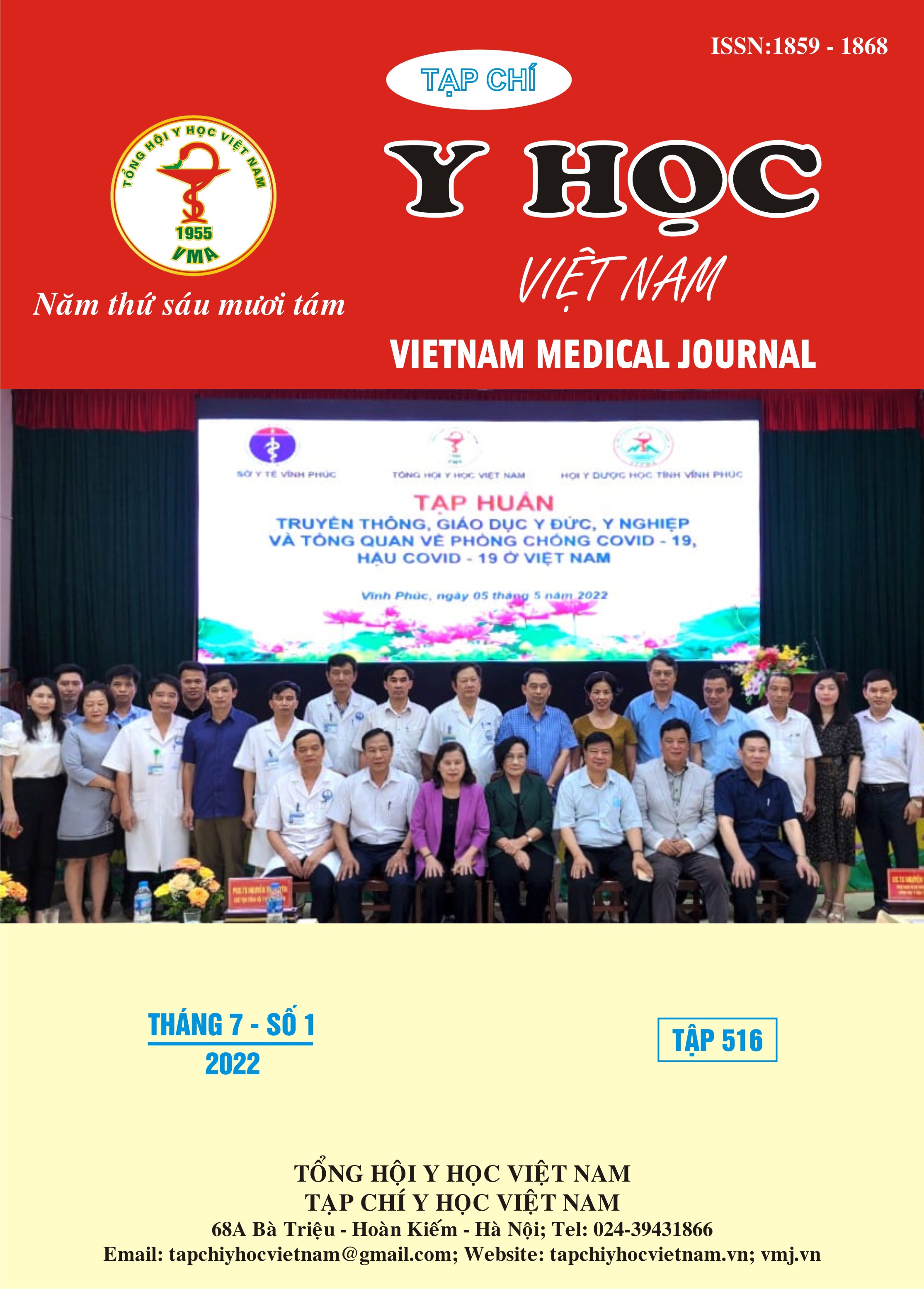TREATMENT RESULTS AND SOME RELATED FACTORS IN PATIENTS WITH SHOULDER SUBLUXATION AFTER CEREBRAL INFARCTION TREATED BY ELECTRO-ACUPUNCTURE COMBINED WITH JOINT EXERCISE AND SHOULDER BELT
Main Article Content
Abstract
Objective: This study aimed to: 1. Evaluate the treatment results of shoulder subluxation after cerebral infarction by electro-acupuncture, joint exercise and shoulder belt. 2. Describe some factors related to the treatment outcomes. Subjects and Method: use randomized clinical trial and compare results before-after treatment on 30 patients with shoulder subluxation after cerebral infarction who were treated by electro-acupuncture combined with joint exercise and shoulder belt. Results: 60% of patients had clinically significant improvement in the total FMA (Fugl-Myer Assessment) score and 46.7% of patients recovered from Shoulder subluxation on radiographs. The group of patients with severe Shoulder subluxation had a worse recovery ability than the moderate and mild Shoulder subluxation group (OR = 4,0, 95% CI = 1,71 – 9,35). The linear regression equation is: Change in total FMA score = 0.851 x Change in shoulder partial dislocation distance + 0.218. The factors of age, sex, duration of illness, NISSH (National Institutes of Health Stroke Scale) score, degree of paralysis, paraplegic side, dominant hand, complex pain syndrome did not clearly affect the difference in the level of movement and the level of hand dexterity (p > 0.05). Conclusion: 60% of patients had clinically significant improvement in total FMA score and 46.7% of patients recovered from Shoulder subluxation on radiographs. Severe degree of Shoulder subluxation is less likely to recover from Shoulder subluxation.
Article Details
Keywords
Shoulder subluxation, Cerebral infarction, Electro-acupuncture, Related factors
References
2. Coupar F, Pollock A, Rowe P, Weir C, Langhorne P. Predictors of upper limb recovery after stroke: a systematic review and meta-analysis. Clin Rehabil. 2012;26(4):291-313. doi:10.1177/0269215511420305
3. Jang SH, Yi JH, Chang CH, et al. Prediction of motor outcome by shoulder subluxation at early stage of stroke. Medicine (Baltimore). 2016; 95(32) :e4525. doi:10.1097/MD.0000000000004525
4. Kumar P, Kassam J, Denton C, Taylor E, Chatterley A. Risk factors for inferior shoulder subluxation in patients with stroke. Physical Therapy Reviews. 2010;15(1):3-11. doi: 10.1179/ 174328810X12647087218596
5. Kwakkel G, Kollen BJ. Predicting activities after stroke: what is clinically relevant? Int J Stroke. 2013;8(1):25-32. doi:10.1111/j.1747-4949.2012.00967.x
6. Turner-Stokes L, Jackson D. Shoulder pain after stroke: a review of the evidence base to inform the development of an integrated care pathway. Clin Rehabil. 2002;16(3):276-298. doi:10.1191/ 0269215502cr491oa
7. Wang RY, Yang YR, Tsai MW, Wang WTJ, Chan RC. Effects of functional electric stimulation on upper limb motor function and shoulder range of motion in hemiplegic patients. Am J Phys Med Rehabil. 2002;81(4):283-290. doi:10.1097/ 00002060-200204000-00007
8. Zorowitz RD, Idank D, Ikai T, Hughes MB, Johnston MV. Shoulder subluxation after stroke: a comparison of four supports. Arch Phys Med Rehabil. 1995;76(8):763-771. doi:10.1016/s0003-9993(95)80532-x


